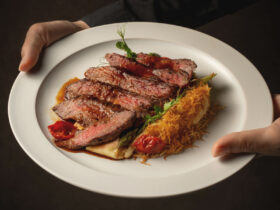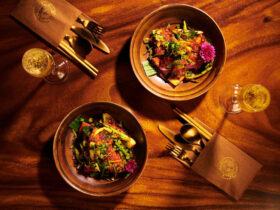Néih hóu, or hello! This week we touch on the Cantonese cultural dishes. Bet you never knew these were Cantonese!
[dropcap]T[/dropcap]he Cantonese cuisine is one of the most prominent Chinese cuisines that have planted its place firmly in Western countries. Most of the trademark Cantonese dishes came from the province of Guangdong. This is because of Guangdong’s strategic location as a trading port, which means they get to experiment with a variety of imported food and ingredients.
The traditional Cantonese cuisine stresses on well-balanced flavour. They believe in using spices lightly, placing greater importance on the primary ingredients of the dish. Unlike its counterpart dialects, the Cantonese do not have a definitive place for herbs in their cooking.
Dried Scallops

The use of dried scallops (otherwise known as conpoy) in Cantonese cuisine is extensive and it is regarded as a must-have ingredient to most Cantonese seafood chefs. In fact, the term conpoy came from the Cantonese pronunciation of 乾 貝, which translates to dried shell fish in English.
It is an ingredient intensely rich in umami and nucleic acids. The smell of it is marine and highly pungent. It started out as a humble ingredient but today, it is revered as a gourmet-worthy element in any dish. In fact, the famous XO sauce is primarily made of dried scallops.
Century Egg Congee

The century egg, also known as preserved egg, is made by preserving duck, chicken or quail eggs in a mixture of clay, ash, salt, quicklime and rich hulls for several weeks to months. This is to cultivate the york to a dark green to grey hue, leading to a creamy consistency and odour of sulphur and ammonia. Similarly, the white changes too, turning into a dark brown and translucent jelly-like texture. While they can be eaten on their own, it is prepared most commonly with congee and diced pork.
Fermented Bean Curd

The famous fermented bean curd hails from the Cantonese. It is a form of processed and preserved tofu, used as a condiment made from soybeans. The ingredients are soybeans, salt, rice wine and sesame oil. While it can be used to complement rice or porridge, it can be eaten by itself too. It is known as the “blue cheese” of Chinese cuisine, as it can be kept for several years if refrigerated.
Stinky fermented bean curd is the most popular variant of this dish. It is fermented over six months, acquiring a strong acrid smell that deters most people from trying it, despite its strong creamy flavour.
[quote]Unlike its counterpart dialects, the Cantonese do not have a definitive place for herbs in their cooking[/quote]
Salted Fish

Salted fish is a fish either preserved or cured with salt. It is a staple diet in Southern China and is known as the “poor man’s food”. This is because it complements rice well with its high salt content, earning its place as a dinner favourite with the poorer population.
The salted fish is fondly referred to in Chinese culture, with mentions of it extending from songs to movies. Hong Kong singer George Lam once crooned that, “Even salted fish and cabbage taste really good” in one of his songs, reminding us of the humbling story behind this symbolic dish.
Chinese Sausage

This Chinese New Year staple is known better by its Cantonese name, lap cheong. Lap Cheong is a dried, hard sausage made from pork and fat. The process of preparing it is by smoking, sweetening and then seasoned with rose water, rice wine and soy sauce. It is a primary ingredient in most dishes from the province of Guangdong. Variations of it include adding red chili powder and Sichuan pepper powder.
By Nicole Lee
ADVERTISEMENTS










Leave a Reply